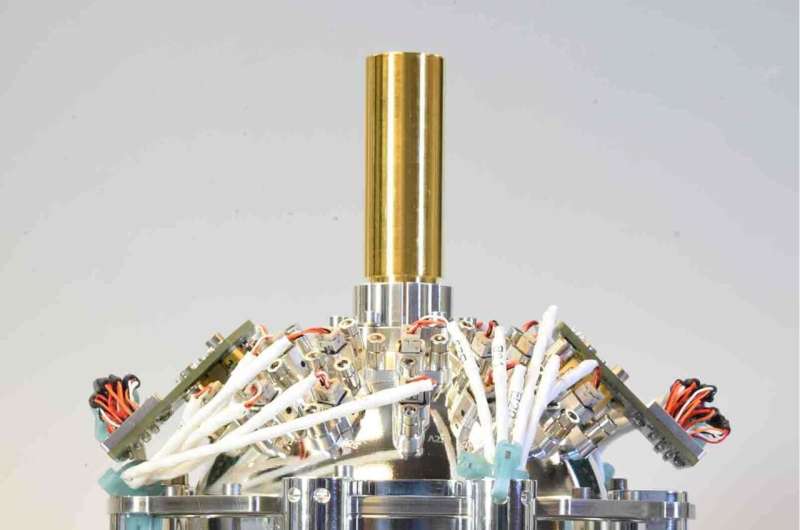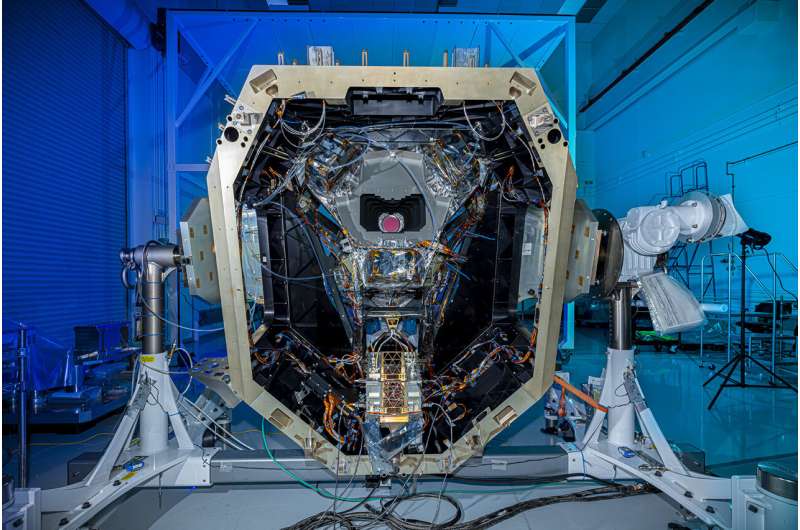The Roman team originally planned to use a different version of the sRCS. But to ensure the sRCS would be ready on time and of the caliber needed for the mission, a team of engineers at Goddard jumped in with a new approach. Using some components from the original version, the team redesigned, built, and tested the sRCS—a process that usually takes several years—in about a year and a half, while ensuring it will meet all of the mission's requirements.
"This incredible feat was only made possible by pulling in extraordinary engineers and scientists from various disciplines who exemplify the teamwork and dedication that NASA prides itself in," said Hali Flores, the sRCS product development lead at Goddard.
The subsystem was delivered to Ball Aerospace, where it was integrated into the WFI's Cold Sensing Module, pictured above. The gold and silver component at the center of the photo near the bottom is the electronics box that controls the sRCS, and we can see its output light as a red glow near the center of the image.
The heart of the system is a softball-sized hollow sphere built by Hawaii Aerospace Corporation in Honolulu. Its interior is made of a diffusely reflective material called Spectralon that interacts with light from 24 light-emitting diodes (LEDs), in six different wavelength bands corresponding to the visible and infrared filters of the WFI. It will illuminate the detector array (which will fit in the smile-shaped hole in front of the red light like a puzzle piece) with precisely controlled light at different intensities.
Scientists will periodically compare how the detectors respond to that light with their response to light from cosmic objects, which will reduce uncertainty in Roman's measurements. The sRCS is designed to enable the detectors to measure the relative brightness of celestial objects to roughly 0.1 percent accuracy even when the objects differ in brightness by a factor of 100,000.

"The sRCS helps scientists understand exactly how our detectors respond to the light from the objects we observe—particularly how that response varies with the color or brightness of the light," said Jackie Townsend, Roman's deputy project manager at Goddard. "The ability to do this on-orbit with this accuracy is unique to Roman, and is core to achieving our science objectives."
Next, additional components will be integrated into the WFI, including the detectors in May. Then, the sRCS and detectors will be tested together. As part of a thermal test this fall, the sRCS will perform its first calibration sequence on the detectors that will fly aboard the spacecraft.
More information: For more information about the Roman Space Telescope, visit: roman.gsfc.nasa.gov or www.nasa.gov/roman. To virtually tour an interactive version of the telescope, visit: https://roman.gsfc.nasa.gov/interactive/.
Provided by NASA's Goddard Space Flight Center



